#disabilitytoowhite
Explore tagged Tumblr posts
Text
Thank You
To all the lovely disabled kindred spirits, activists, and creative peoples, who helped me understand my disability better when doctors did not, who helped me to find my voice in my disability identity, who helped me to heal (still healing) & rise up from ableism, & lastly reminded me that unless the fight for disability liberation is intersectional, the disability community will never truly be free. Without their influence, this book would not exist as is.
(In no order of importance) Shelly Radford, Adam See, Annalisa Rivera, Shadow Lambertis, Ernie Matthews, Dov Zeller, Gregg Beratan, Zev Wagenberg & Arthur Congdon
To the intersectional disability Twitter community, w/ extra thanks to Alice Wong (Author, Creator of Disability Visibility & Co-Organizer #CripTheVote w/ Gregg & Andrew Pulrang), Vilissa Thompson (#DisabilityTooWhite), Dom Evans (#AbleismExists), Lawrence Carter-Long (#SayTheWord), Kendra Scalia (#SaveCDPA & #FairPay4HomeCare), Lizzie Kuhn (my former
PCA & fellow disabled activist-artist), Annie Segarra & Victoria Acuña Pakoti (whose creative activist online content inspires me – but not in an ableist way)
To Kimberlé Crenshaw who coined the term intersectionality, which radically changed my activism. To Audre Lorde who said “Caring for myself is not self-indulgence, it is self-preservation, and that is an act of political warfare.” which radically changed the way I viewed self-care, in a time where “injustice never rests, so either will we” was the motto of many activist movements I was in.
To musician & activist, Hozier whose poetry readings during the pandemic, reminded me of my love of poetry & writing. It was the poetry readings that inspired me to start writing poetry again,
including many of the poems in this zine.
And lastly to you for taking the time to read this book. May it be part of the collective effort to change the world.
0 notes
Photo

[Description: a brown round Queer in black blazer, see through lace shirt, purple cane. They stand outside @brooklynmuseum for @dapperq.] . . Me lastnight: Theme - Lacy sick spoonie prince pre-sunset. . Getting ready for my #Virgo/birthday shine starting w/ DapperQ Presents Pursuit. Thank you Anita Dolce Vita/ @anitadolcevita for this necessary & majestic event -- for Queer Fashion, for inviting me, for reminding us all kinds of bodies and spirits are stylish and glorious. 💖 I'm grappling with how my body is anomoly. How skinny fit brown nonbinary and masc bodies are promoted and desired. I'm also noting how #disabilitytoowhite & also skinny images of Disabled people bombard not just fashion but daily awareness. A faux acceptance. How to even find an outfit for me to feel glorious in takes searching from scratch, a search & find focus, a recipe of the body. There's no cookie cutter; There's no given in this body. Y'all who get this in your marrow-- I'm here for this brilliance. Your a steady daily customized curation. I'm here for your patchwork power. I'm trying to be here with you. . . Fit: Blazer (by Zara), Shirt (by Stuzo clothing), Pocket square (Asos), Cane (Vive). . . _____ #dapperq #dapperqnyfw #queerstyle #spoonie #transgender #nonbinary #disability #pilipinx #theythem (at Brooklyn Museum) https://www.instagram.com/p/B2F_XqAlMOo/?igshid=11qntk2twxfvp
#virgo#disabilitytoowhite#dapperq#dapperqnyfw#queerstyle#spoonie#transgender#nonbinary#disability#pilipinx#theythem
2 notes
·
View notes
Text
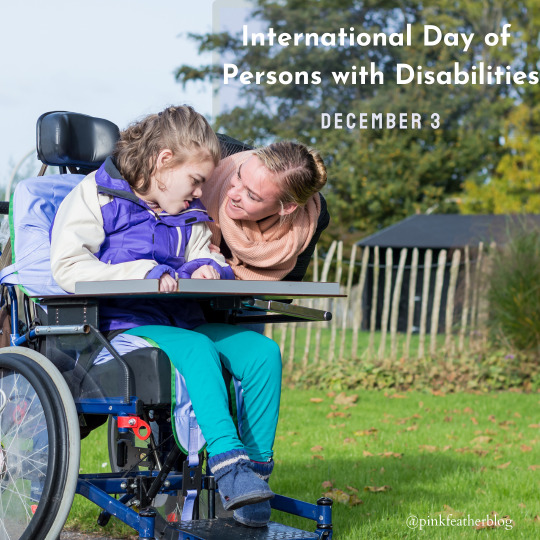
When we focus on someone’s disability, we often overlook their abilities, beauty, and uniqueness. Once we learn to accept and love them for who they are, we subconsciously learn to love ourselves unconditionally. 💙
On International Day of Disabled Persons, we aim to promote the rights and well-being of persons with disabilities in all spheres of society and development. 💙
#idpd#everyoneincluded#crpd#idpwd#disabilitytoowhite#getyourbellyout#cripthevote#thebarriersweface#ableismexists#disabodyposi#showmeyourpump#actuallyautistic#deaftalent#invisibleillness#spoonie#chronicsex#wheelchairlife#servicedog#purplelightup#InternationalDayofDisabledPersons#pinkfeatherblog#explorepage#fyp#disabledliving#personswithdisabilities#aapdofficial#disabilityin#disabilityawareness
1 note
·
View note
Text
Sensitive compassion & tactfulness are not often offered as continued waves of heartbreaking things occur within the African descent/ Black community. Police killing after police killing, act of white supremacy terror after act of white supremacy terror, & this community's times of mourning are deemed less important by the media or by the public, than things that affect non-Black people. The insulting Blackface imitation & all it's modern day variations including appropriation of Black slang, Black culture , the Black lived experience in general, continues as much as the slaughter & discrimination against people who are actually Black. Both Kosha Dillz's appropriation & ableism are anti-Black, & are carried out by a caucasian Jewish guy who is treated somewhat better by the mental health system. Instead of using his social media to look into the subject matters of e.g. casual racism, sexism, & ableism, ( or instead, liking posts on accounts he could be following that are geared toward these subjects) he was liking a selfie of a Black woman's face, connected to a Black woman's entire body, which is so heavily exploited..fetishized.. brutalized.. by the orchestrators of the very white supremacy that celebrates him.
I began discovering online that paranoia & brainwashing are real aspects of mental health that are commonly changed inaccurately outside of their medical meaning. When I expressed myself to Kosha Dillz about his continual cultural incompetence, the gist of what I was met with was the casually racist mental health stigma "You are just being paranoid & brainwashed by PC culture".


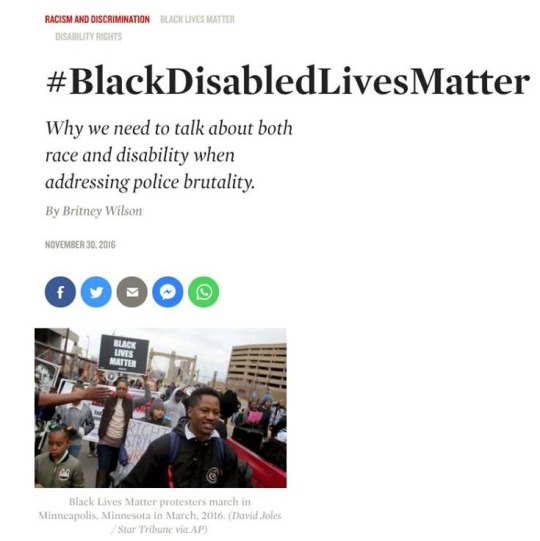


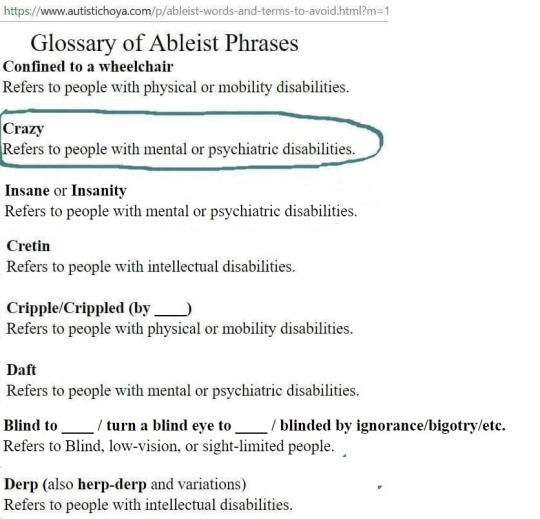

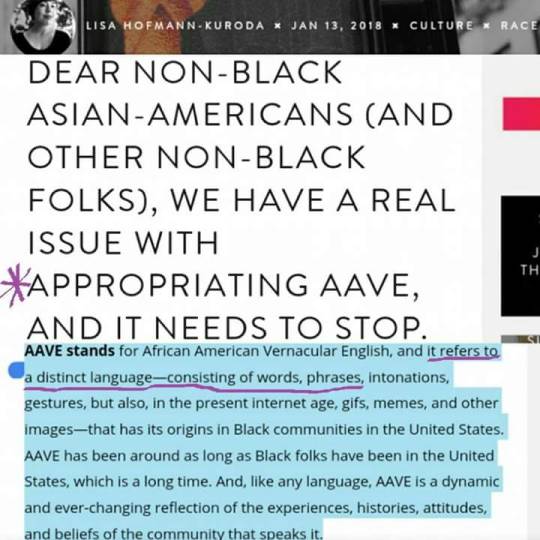
#disabilitytoowhite#AbleismIsAntiBlack#disabledblacklivesmatter#deborahdanner#kaliefbrowder#charleenalyles#sarahreed#bothamjean#whileblack#macmiller#koshadillz#jewishantiblackness#nonblackprivilege#hiphop#blackvoicesmatter#cultureshock#art#rejectwhitesupremacy#policebrutality#beastieboys#listentoblackwomen#blackerasure
3 notes
·
View notes
Text
Rhetoric that White Autistics should avoid
Should note here that I’m not white and definitely not white passing. However, I’m also not brown/black and definitely do not deal with the same extent of stigma that they go through. but I want to acknowledge and account for their experiences in this post which the white autistic community has been doing very poorly thus far from what I have seen.
Anyway, moving on:
1. “What if autistic people were considered more superior to these weird allistic people” posts
This is something that personally affects me a lot, so its easy to talk about first. If you’ve been in the autistic community as long as I have, you’ve seen plenty of these posts. Posts where the role of stigma is reversed, posts where allistic people are stigmatized while autistic people are considered the norm and accepted by society. A couple of points first: 1. Autism is a spectrum that I feel like people keep forgetting and this sort of stuff absolutely alienates those with symptoms that are more stigmatizing. 2.This does not account for other mental disabilities and completely throws them under the bus
But the biggest thing for me however, is that these posts are clearly made for and by white autistics. It is actually feasible, and arguably normalized, for white people to fantasize being normalized and on top with just a few social rule changes. Not so for the rest of us. The stigma autistics of color face is so much more fundamentally different than that white autistics face and we know we are going to be punched down anyway, so posts like these mean nothing other than alienating the rest of us and asserting the benefits of white supermacy
Also there mere concept of viewing a set of people as higher than the other is eugenicist rhetoric, which again is something that nonwhite people have and continue to suffer from the most.
2. “Stimming in public is so empowering and good and I encourage other people to do it too” or posts urging to be visibly autistic in public
At least it is somewhat accepted that being able to stim openly is a priviledge, but I don’t think it is as well known that being able to stim openly in public is very much a white autistic priviledge (also arguably a light-skinned priviledge in my experience but I won’t try my luck experimenting with this).
No one ever sees brown/black people as autistic. When people see them stimming in public, they see someone who is violent and unhinged. They see drug addicts. They see brown and black autistics of color as threats.
White supremacists are always waiting for the excuse to start a scene with these people. White women, the police, transit officers, etc.
For more about being stigmatized as violent, here’s a thread about Arnaldo Rios-Soto who the police tried to force to admit to wanting to hurt someone after they shot his black staffer, Charles Kinsey (I also recommend reading the rest of the thread and the links in it)
There is no age limit to this either. Here’s an article where a teacher called the police on and pressed charges on an 8-year old autistic black boy who accidentally hit her during a meltdown
Anyway, while it is definitely not wrong to be visibly autistic in public and it shouldn’t be wrong, please at least consider the barriers people face that they could be in danger for crossing when making posts like these.
3. In general, posts about stigma without acknowledging or considering stigma faced by other racial groups
I’ve really had to distance myself from the autistic community for this one, and I know it is out of ignorance, but it is still so incredibly alienating. I’ve acknowledged a lot of this in my post here and I really have to ask you all to do the same. Acknowledge the stigma autistics face when dealing with immigration, with the police, with racism, from communities with our own race.
Also stigma when it comes to the medical field and institutionalization. Here’s a thread about Rebecca, a 22 year old autistic black woman who went through institutionalization, meltreatment, and patient dumping.
Finding this sort of information is unfortunately hard when autistic voices are so predominantly white, but I have a few links to help people out and that I have so far started out with:
The #AutisticWhileBlack hashtag on twitter
Kerima Cevik, or twitter user kerima_cevik who created #AutisticWhileBlack
Lydia Brown, or twitter user autistichoya who is a nonbinary, East Asian, autistic activist
Also some other disabled of color activists I follow:
Alice Wong: twitter user SFdirewolf
Vilissa Thompson: twitter user VilissaThompson
Feel free to add onto this post!
#actuallyautistic#autism#disabilitytoowhite#police brutality#racism#anti-black racism#instutitionalization#anyway I hope this is readable hhfff
27 notes
·
View notes
Link
"#DisabilityTooWhite constantly reminds me as an activist that I need to do better"
14 notes
·
View notes
Text
Disability, Slavery, & The Call to #PickUpUnderground
Aisha Hinds as Harriet Tubman (WGN America)
Social media was abuzz with shock earlier this week when we learned that the critically acclaimed show Underground was canceled on WGN America after two seasons. I was incredibly upset that this dynamic show and its compelling depiction of slavery would no longer be returning for a rightfully earned third season.
As someone who enjoys history and…
View On WordPress
#DisabilityTooWhite#Aisha Hinds#Black Disabled Bodies#Disabled Slaves#Harriet Tubman#History#Media#Media Representation#PickUpUnderground#RenewUnderground#Representation#Slave Narratives#Slavery#Underground#Vilissa Thompson
11 notes
·
View notes
Text
#BlackHistoryMonth: Disability History is Black History is American History

[Image Description: A graphic featuring a vintage brown photo of Harriet Tubman against a white background next to gray, black, and brown text that reads “disability history is black history is american history.” @blackbrownspoon]
Each year in February, America reflects on milestones and achievements in the Black community, as well as its role in shaping American history. Often left out of this discussion is the integral role that disability, healthcare, and the treatment of black bodies played in shaping Black history and American history as a whole. So please enjoy a timeline of #DisabledBlackHistory that shows some of the most well-known Black historical events-- and the influence of disabled POC and black bodies on those events.
(This post may contain affiliate links. See my disclaimer for more details.)
*TW/Note: These events may feature ableist/racist stereotypes or notably graphic/triggering depictions of abuse, mistreatment, or trauma of disabled POC. Feel free to read at your own risk.
1619-1808:
Slaves are legally transported from Africa to the Americas through the Middle Passage, the route slaves traders took across the Atlantic Ocean via slave ships. Captives were housed in tightly confined, unsanitary compartments in the ship, at times stacked onto each other. Physical and medical neglect and abuse were the norm, and as a rule captives were forced to release bodily fluids where they were seated, leading to the spread of infectious diseases. An estimated 15% of captives did not survive the journey, with a total of up to 2 million deaths as a result of the Middle Passage until the importing of slaves was outlawed in the US in 1808.
Read more: “Slavery at Sea: Terror, Sex, and Sickness in the Middle Passage” by Sowande M. Mustakeem
1600’s-1800’s:
“The Dozens” is a well-known, rich tradition within the African American community in which participants playfully (or not so much) drag not only each other, but often their moms with a series of incisive, targeted jokes. Less well known about the tradition is its roots during slavery, as it was often used by slaves to judge and devalue other slaves on the basis of their flaws-- frequently of their apparent disabilities. According to Krip Hop Nation, “The name itself [“The Dozens”] refers to the sale of slaves who had been overworked, were disabled, or beaten-down – their physical (and often mental) conditions affected their value and they were sold by the dozen, which was considered by slaves, the lowest position within the community.” The game was played as an “outlet of aggression” for slaves who could not yet fight or prevent their oppression or the discarding of slaves on an ableist basis, but could instead encourage each other to develop a thick skin emotionally in the meantime.
Read more: Yo Mama! New Raps, Toasts, Dozens, Jokes, and Children's Rhymes From Urban Black America by Onwuchekwa Jemie
Mid-1600’s:
Colonies develop “Slaves Codes” that, for the first time, codify that slavery will happen on the basis of skin color alone. Previously, indentured servants and slaves were of every race. Once Slave Codes limited slavery solely to African Americans, physicians and academics became instrumental in the medicalization of slavery and pathologization of blackness to justify continuing slavery.
Read more: Critical Race Theory: The Key Writings That Formed the Movement by Kimberle Crenshaw, N. Gotanda, G. Peller, and K. Thomas
Late-1700’s:
Physician Benjamin Rush, signer of the Declaration of Independence and Surgeon General of the Continental Army during the American Revolution, theorizes a disease known as “negritude”, which he considered a form of congenital leprosy, to explain dark skin tones, which could be treated with aggressive rubbing of the skin.
Read more: Medical Apartheid: The Dark History of Medical Experimentation on Black Americans from Colonial Times to the Present by Harriet A. Washington
Mid-1800’s:
Physician Samuel Cartwright theorizes diseases to explain disobedient or rebellious slaves. “Drapetomania” is a curable mental illness in which slaves develop the desire to run away from their masters and obtain freedom, which is treated by keeping slaves “well-fed and clothed” and “not overworked”. “Dysaethesia Aethiopica”, or “rascality” in layman’s terms, is another mental illness marked by a “difficult [...] mind and sensibility” that are “apt to do much mischief” and “slight their work” whose root cause is “negro liberty”, which is curable via whippings and abuse.
Read more: Medical Apartheid: The Dark History of Medical Experimentation on Black Americans from Colonial Times to the Present by Harriet A. Washington
Early-to-Mid-1800’s:
Slavery ends in the North, and continues in the South, sparking the Abolitionist Movement. The Underground Railroad, a network of safe houses owned by freed African Americans and White allies from the South leading into the Northern US and Canada, is established to allow slaves to escape often by foot. The most well-known “conductor” of the Railroad was Harriet Tubman, an escaped slave woman who developed a traumatic brain injury and consequently epilepsy and narcolepsy while enslaved and eventually facilitated the freedom of more than 70 slaves.
Read more: Harriet Tubman: Myth, Memory, and History by Milton C. Sernett
Mid-1800’s:
While growing medical literature distinguishes blackness as a syndrome and Black people as a separate species, physicians simultaneously primarily use slaves for experimentation of new procedures and treatments to generalize for use in mainstream white populations. J. Marion Sims, known as the father of modern gynecology, created the speculum and a procedure to repair post-childbirth vaginal fistulas by buying and experimenting on slaves. Despite being available in 1845, Sims did not use anesthesia on his black female subjects because Black people were believed to experience less pain from injury. This has long been debunked.
Read more: Medical Apartheid: The Dark History of Medical Experimentation on Black Americans from Colonial Times to the Present by Harriet A. Washington
Mid 1800’s-Early 1900’s:
Traveling vaudeville and circus acts are the leading form of entertainment in the US. Many vaudeville acts prominently feature minstrelsy or “blackface”, the act of White (and eventually some Black) actors painting their skin to take on a caricatured, deliberately mocking impression of African Americans. The first popular blackface act was “Jumping Jim Crow” in the 1820’s, said to be inspired by the dance of a physically disabled slave by the same name. Travelling circus acts prominently feature “freakshows” featuring performers displaying their rare conditions and disabilities, including dwarfism, albinism, and other conditions. African Americans were frequently used in these acts. Sarah Baartman, known as the “Hottentot Venus” was put on display due to having an exaggeratedly large bottom due to a condition called steatopygia.
Read more: Medical Apartheid: The Dark History of Medical Experimentation on Black Americans from Colonial Times to the Present by Harriet A. Washington
1861-1865:
The Civil War is fought, and won by the North following the signing of the Emancipation Proclamation in 1863, which eventually led to the freedom of slaves starting on June 19th, 1865 (otherwise celebrated as Juneteenth). Black soldiers were an integral part of the Union’s victory, with more than 15 soldier earning a Medal of Honor after the war. Those who fought in the war are also the first African Americans to receive federal disability pensions for veterans.
Read more: Intensely Human: The Health of the Black Soldier in the American Civil War by Margaret Humphreys
Late 1800’s:
Following the abolishment of the 13th Amendment and of slavery, all Southern States eventually passed “Black Codes” and “Jim Crow Laws” to segregate and restrict the rights of former slaves and their descendants during Reconstruction. This leads to segregations of most major institutions and facilities, including hospitals, schools, and facilities for people with disabilities. Black physicians build their careers during this time via segregated hospitals, nursing and medical schools, medical journals and-- in response to the whites-only American Medical Association at the time-- establishing the National Medical Association specifically for African Americans.
Read more: Just Medicine: A Cure for Racial Inequality in American Health Care by Dayna Bowen Matthew
1880’s-1920’s:
Booker T. Washington establishes the Tuskegee institute, which initially teaches nursing and eventually established the first Veterans Hospital for African Americans. He also founded “National Negro Health Week” in the 1920’s to spotlight unaddressed health disparities in the African American community. It spotlights diseases prevalent in the Black community, particularly syphilis and tuberculosis. At the time, African Americans are believed to be predisposed to these diseases due to genetics. Germ Theory later emerges in the 1930’s that reveals that both diseases are infectious. Their prevalence in Black communities is later explained by segregation and poverty concentrating and restricting African Americans to living under unsanitary conditions in low-income communities.
Read more: Medical Apartheid: The Dark History of Medical Experimentation on Black Americans from Colonial Times to the Present by Harriet A. Washington
Early 1900’s:
The field of “Eugenics” is created and mainstreamed in the United States via the American Eugenics Society. The eugenics movement, which originally promoted selective breeding for exceptionally positive traits in affluent communities, eventually focused on eliminating negative traits across society. Eugenicists lobbied for legislation in many states to forcibly sterilize groups with high rates of “undesirable” traits, primarily in poor, disabled, and minority communities. The US Supreme Court upheld the practice in the case Buck vs. Bell in 1927. This resulted in the forced sterilization of over 64,000 people (a low estimate) in the United States alone. The rise of the Nazi movement in Germany and the Holocaust eventually led the movement to lose power by the 1940s, but the practice of involuntary sterilization continued until the mid-1970s, and laws are not codified explicitly banning it until as late as the 2000s.
Read more: Medical Apartheid: The Dark History of Medical Experimentation on Black Americans from Colonial Times to the Present by Harriet A. Washington
1930’s-1940’s:
Hitler assumes power, begins the Third Reich, and eventually begins the Holocaust by segregating, interning, and engaging in genocide of Jewish people, other ethnic minorities, and disabled people across Germany and Western Europe, triggering World War II. Hitler cites American eugenics and sterilization laws as his inspiration for ethnic cleansing and segregation. Over 100,000 African Americans fight in World War II, under segregated conditions. The victory of the US in World War II is thought to be one of the catalysts of the Civil Rights movement and ending of segregation in the US.
Read more: Medical Apartheid: The Dark History of Medical Experimentation on Black Americans from Colonial Times to the Present by Harriet A. Washington
Mid 1930-1970’s:
The “Tuskegee Study of Untreated Syphilis in the Negro Male”, also known as the Tuskegee Experiments, is initiated by the United States Public Health Service in the 1930s. Contrary to the popular misconception, the study did not infect any African American participants with syphilis. However, a small, predominantly African American community in Alabama was targeted for its high rate of syphilis infections before treatment existed. The goal of the study was to gain an understanding of the long-term effects of syphilis and to discover a potential treatment. Very early into the study, penicillin was discovered as a treatment for syphilis and other bacterial infections and mainstreamed quickly into medical practice around the country. Up to 600 Black participants in the study, however, were left untreated for syphilis during the course of the decades-long study. Many participants were never offered treatment, not formally diagnosed with syphilis but told they had “bad blood”, enticed into continuing treatment in the participating hospital with free healthcare, and given placebos and experimental treatments in place of penicillin. The study was later stopped and abandoned due to these unethical practices, and revealed to the public in the 1970’s with led to lawsuits and congressional hearings. A number of medical studies followed a similar practice of withholding treatment during this era, which disproportionately targeted Black civilians and prisoners in the US.
Read more: Medical Apartheid: The Dark History of Medical Experimentation on Black Americans from Colonial Times to the Present by Harriet A. Washington
1950′s:
A number of advances in the medical field and science emerge starting in the post-World War era, among them the discovery of the Polio Vaccine in the 1950′s, advances in cancer treatment, and by the end of the 20th century the study of the human genome. A little-known fact about each of these discoveries is that they are in part thanks to a black woman named Henrietta Lacks. Lacks died in 1951 of a rare form of cancer that produced the first known “immortal cells” that would reproduce outside of the human body indefinitely. Her cancerous tissue, now known as “HeLa cells”, have since been used by researchers to develop treatments and cures of many diseases. Her contribution to medicine is controversial, however, because her tissue was taken without her consent and her family initially was neither made aware of, nor as of today compensated for, the medical discoveries her tissue facilitated.
Read more: The Immortal Life of Henrietta Lacks by Rebecca Skloot
1950’s-1970’s:
The Supreme Court case Brown vs. Board of Education finds “separate, but equal” segregated facilities unconstitutional and inherently unequal, which slowly leads to the integration of schools, hospitals, and other public facilities. This win eventually sparks the Civil Rights Movement and victories such as the Voting Rights Act and Civil Rights Act in the 1960’s. Among prominent leaders in the movement is Fannie Lou Hamer, who helped organize the Freedom Summer in Mississippi to register Black residents to vote. Fannie Lou Hamer is a survivor of an involuntary hysterectomy, which occurred without her knowledge during a procedure for chronic kidney disease and was a result of forced sterilization laws that targeted Black women and were popular in the South. Another prominent group was the Black Panther Party who, while advocating for Black power, also provided for local Black communities with free healthcare clinics and food pantries. Bradley Lomax, a Black Panther with Multiple Sclerosis, helped to organize the occupation of regional offices of the US Department of Health, Education, and Welfare (HEW) for disability rights, knowns are the “504 Sit-ins” that led to the addition of Section 504 of the American Rehabilitation Act of 1973, a precursor to the Americans with Disabilities Act of 1990.
Read more: Body and Soul: The Black Panther Party and the Fight against Medical Discrimination by Alondra Nelson
1980’s:
The HIV/AIDS epidemic begins in the early 1980s. It’s first clinically observed in gay communities and receives the name “gay-related immune deficiency” (GRID) until it’s observed in non-LGBTQ communities and receives the name AIDS in 1982. The disease eventually gets the reputation of affecting “the 4-H Club”-- primarily attacking 1) heroine and intravenous (IV/needle) drug users, 2) hemophiliacs and chronically ill patients who give and receive blood in medical settings, 3) homosexuals and the LGBTQ community, and 4) Haitians and poor Black communities in the US and, eventually, globally. The United States government was slow to fund research for AIDS through much of the 1980’s, and one of the Reagan Administration’s first references to the disease was to propose a travel ban on immigrants and tourists with the disease in 1987. While treatment and prevention methods eventually cut infection and mortality rates for HIV, both cisgender and transgender women of color are disproportionately infected and die from AIDS.
Read more: And the Band Played On: Politics, People, and the AIDS Epidemic by Randy Shilts
1990′s:
Disability rights advocacy leads to the passage of the Americans with Disabilities Act of 1990. The ADA ensures the right to “reasonable accommodation” for people with disabilities in public spaces in the US. The ADA is the basis on which Olmstead vs. L.C. and E.W. is decided, which allows people with disabilities to be able to live in their communities rather than be put in nursing homes and other institutions. One of the plaintiffs in the case is Louis Curtis (L.C.), a black woman with a developmental disability.
Read more: Americans with Disabilities: Exploring Implications of the Law for Individuals and Institutions by Leslie Francis and Anita Silva
2010’s:
A series of highly publicized, viral extra-judicial killings of unarmed African Americans by police and white civilians in the news and social media sparks the beginning of the Black Lives Matter movement, which advocates accountability for police brutality and discriminatory treatment of Black people by American institutions. Several of the most high-profile victims of the BLM movement, such as Eric Garner, Keith Lamont Scott, Freddie Gray, Sandra Bland, Deborah Banner, and Laquan McDonald had some form of disability, medical or mental condition. Disabled and deaf people are disproportionately targeted by police brutality due to police hyper-reliance on “compliance” by those facing arrest.
Read more: Disability Incarcerated: Imprisonment and Disability in the United States and Canada by L. Ben-Moshe, C. Chapman, A. Carey
You can find many of these milestones and more events in Black Disability History at the online Museum of Disability History.
Were they any major milestones in Black History that were missed? Please reach out to add it to the list!
#spooniesofcolor#spoonies of color#blackandbrownspoonies#black and brown spoonies#blackhistorymonth#disabledblackhistory#spoonie#spoonies#spoonie life#chronic illness#chronic fatigue#chronic pain#chronic life#chronically ill#chronic disease#rare disease#blacklivesmatter#disabledblacklivesmatter#DisabilitySolidarity#disabilitytoowhite#disability#disabilties#invisible disability#invisible illness#mental health#mental illness#health#disabledpocday
80 notes
·
View notes
Photo
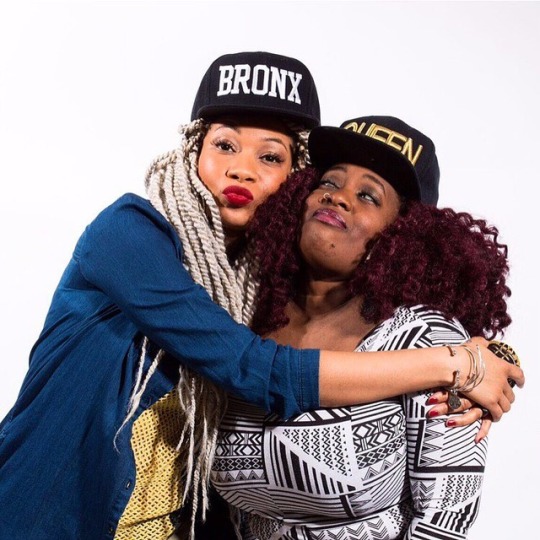
A NEW episode of #teawithqj #podcast is up! #119 "Pay Black Women" CLICK THE LINK IN THE BIO TO LISTEN! ❤✊🏾💚 . . This week... With silence one of the main tools of white supremacy, L’Oreal fires a Black woman for speaking. We debate boycotting the NFL as Colin Kaepernick remains unemployed. And #DisabilityTooWhite. It’s sooo white that Black women are silencing disabled Black women. God help us all. . . #podsincolor #supportblackpodcasts #supportpocpods #payblackwomen #listentoblackwomen #giveyourmoneytoblackwomen #applepodcasts #itunes #soundcloud #stitcher #googleplay #tuneinapp #womanistracenerds #womanism #blackfeminism (at Bronx, New York)
#listentoblackwomen#stitcher#womanistracenerds#supportpocpods#womanism#podcast#blackfeminism#teawithqj#soundcloud#podsincolor#applepodcasts#119#disabilitytoowhite#itunes#tuneinapp#supportblackpodcasts#googleplay#payblackwomen#giveyourmoneytoblackwomen
0 notes
Photo

I wrote this back in February when the ACA repeal was first being debated. @wp4rj shared it again last night in light of that bs the GOP had the nerve to put disabled and chronically ill POC through, and yeah, I'm singling out POC here. Read the full essay here: https://philadelphia-printworks.myshopify.com/blogs/news/threshold-of-revelation-a-disabled-queer-killjoy-on-national-themes #saveaca #skinnyrepeal #savemedicaid #adaptandresist #disabled #disability #chronicillness #disabilitytoowhite #disabledpoc #poc #fdt #Repost @wp4rj (@get_repost) ・・・ A win tonight but barely. Keep fighting. Inspiration from @baniamor. "...It takes from ten minutes to several hours for a human’s eyes to adjust to the dark but for some, it’s been centuries. This couldn’t be more evident in Angels in America, whose only non-white and most femme character, Belize, seems to hold all the answers to the problems of the fledgling white gay men orbiting him... . "In the play, the TV adaptation and in the United States at large, the face of HIV/AIDS is a white middle-class gay man. Watching it, I - a low-income disabled queer gender-nonconforming person of color - have so many questions, like how Prior can afford his endless stream of meds, how he can afford not to work and live alone in the West Village; how he avoids being discriminated against within the medical complex. While we collectively watch the dismembering of the Affordable Care Act, a piece of legislation that was insufficient in a healthcare system that’s world-renowned for its lack of humanity, in 2017, the face of disability is white. The face of “the LGBT community” is white. But how can the face of HIV/AIDS possibly remain white, over three decades after its outbreak in the US, despite all evidence to the contrary? . "...I wonder if the white disabled and “LGBT” communities see Black southerners, women and queer people in particular, as the face, or even a part, of their movements; of their work to save ACA. "It did not take a Trump presidency for me to realize that my enemy sees me more than my purported ally ever will." (at Montreal, Quebec)
#disability#disabled#chronicillness#disabledpoc#savemedicaid#adaptandresist#poc#repost#fdt#disabilitytoowhite#saveaca#skinnyrepeal
0 notes
Link
"Disabled people of color are creating our own spaces and aren’t waiting for a seat at the table"
26 notes
·
View notes
Link
3 notes
·
View notes
Text
The Hashtagversary of #DisabilityTooWhite
Today is the hashtagversary (hashtag anniversary) of #DisabilityTooWhite. I cannot believe it has been a year since the hashtag went viral, and how it changed my life and the dialogue in the community.
It still astounds me that something I created from an impassioned reaction to an article stirred up so much conversation and controversy. The hashtag forced me, and others, to discuss the…
View On WordPress
#DisabilityTooWhite#Disability#Disability Too White#Disabled People of Color#Disabled PoC#Disabled Voices#Hashtag Anniversary#Hashtagversary#Intersectionality#Racism#Representation#Vilissa Thompson
13 notes
·
View notes
Link
Catch up on the latest news on healthcare, illness and disability for people of color with the weekly Black and Brown Spoons Digest: https://paper.li/blackbrownspoon/1526195273 Also check out The Black & Brown Spoons: Social Action Digest for a collection of crowdfund campaigns, petitions, and other ways to get involved from around the web here: http://snip.ly/1gn0xp (via Twitter)
#spooniesofcolor#spoonie#chronic illness#disabilitysolidarity#disabilitytoowhite#disability#blm#chronic fatigue#chronic pain#chronic life#spoonies#spoonie life#invisible illness#invisible disability#butyoudontlooksick#disabilties#blacklivesmatter#health#Healthcare#mental health#blackandbrownspoonies#spoonies of color#black and brown spoonies
3 notes
·
View notes
Text
Disability, Slavery, & The Call to #PickUpUnderground
Aisha Hinds as Harriet Tubman (WGN America)
Social media was abuzz with shock earlier this week when we learned that the critically acclaimed show Underground was canceled on WGN America after two seasons. I was incredibly upset that this dynamic show and its compelling depiction of slavery would no longer be returning for a rightfully earned third season.
As someone who enjoys history and…
View On WordPress
#DisabilityTooWhite#Aisha Hinds#Black Disabled Bodies#Disabled Slaves#Harriet Tubman#History#Media#Media Representation#PickUpUnderground#RenewUnderground#Representation#Slave Narratives#Slavery#Underground#Vilissa Thompson
0 notes